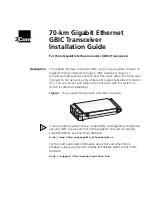
Federal Signal Corporation
Informer Tone Alert Receiver Manual
•
Cleaning - The TAR should be cleaned with a non-abrasive cleaner and a
damp cloth. Do not apply solvents directly onto the TAR.
•
Power Lines - An outdoor antenna should be located away from power lines.
•
Outdoor Antenna Grounding - If an outside antenna is connected to the
receiver, be sure the antenna system is grounded so as to provide some
protection against voltage surges and built up static charges. Article 810 of
the National Electrical Code, ANSI/NFPA 70, provides information with regard
to proper grounding of the mast and supporting structure, grounding of the
lead-in wire to the antenna-discharge unit, size of grounding conductors,
location of antenna discharge unit, connection to grounding electrodes, and
requirements for the grounding electrode.
•
Object and Liquid Entry - Care should be taken so that objects do not fall and
liquids are not spilled into the enclosure through openings.
•
Acoustic Output – The sound output of the TAR may cause hearing damage if
the TAR is activated too close to the user. Always keep the TAR at least six
inches away from a listener’s ears whenever the TAR power LED is on or
blinking.
•
Damage Requiring Service - The TAR should be serviced by qualified service
personnel when:
1. The power-supply cord has been damaged; or
2. Objects have fallen, or liquid has been spilled into the TAR; or
3. The TAR has been exposed to rain; or
4. The TAR does not appear to operate normally or exhibits a marked
change in performance; or
5. The TAR has been dropped, or the enclosure damaged.
•
User servicing should be limited to battery replacement. All other servicing
should be referred to qualified service personnel. Always test the TAR before
using after repairs have been made.
ii





































